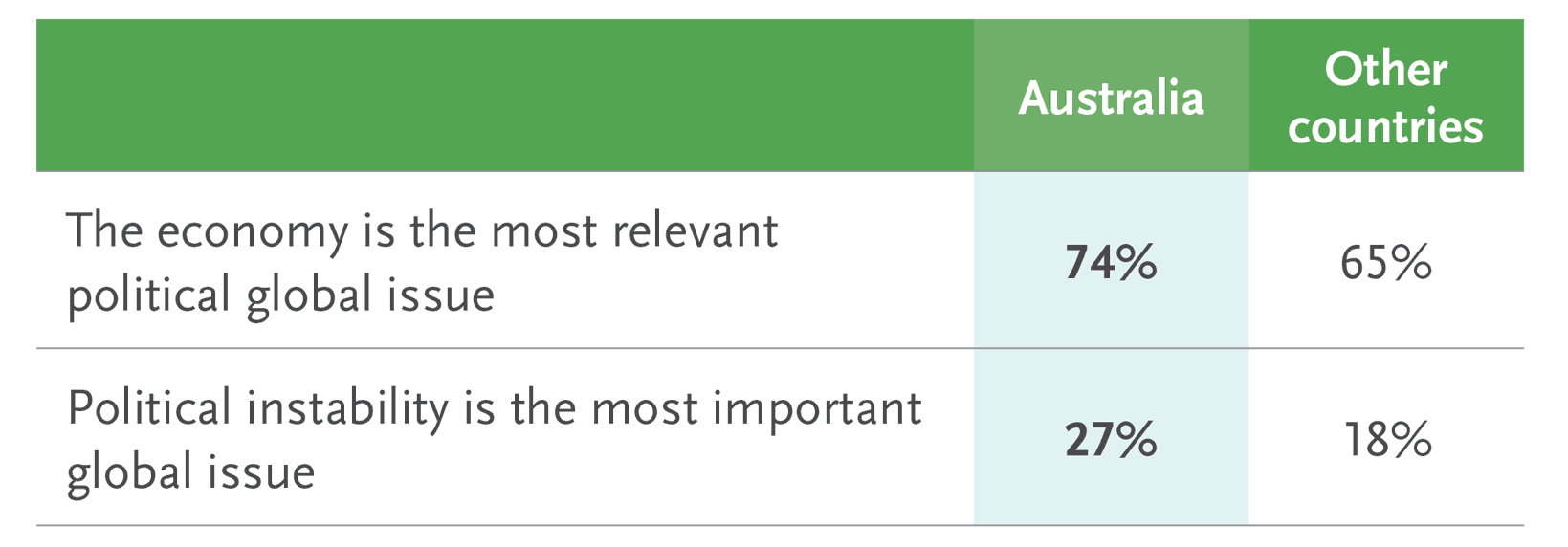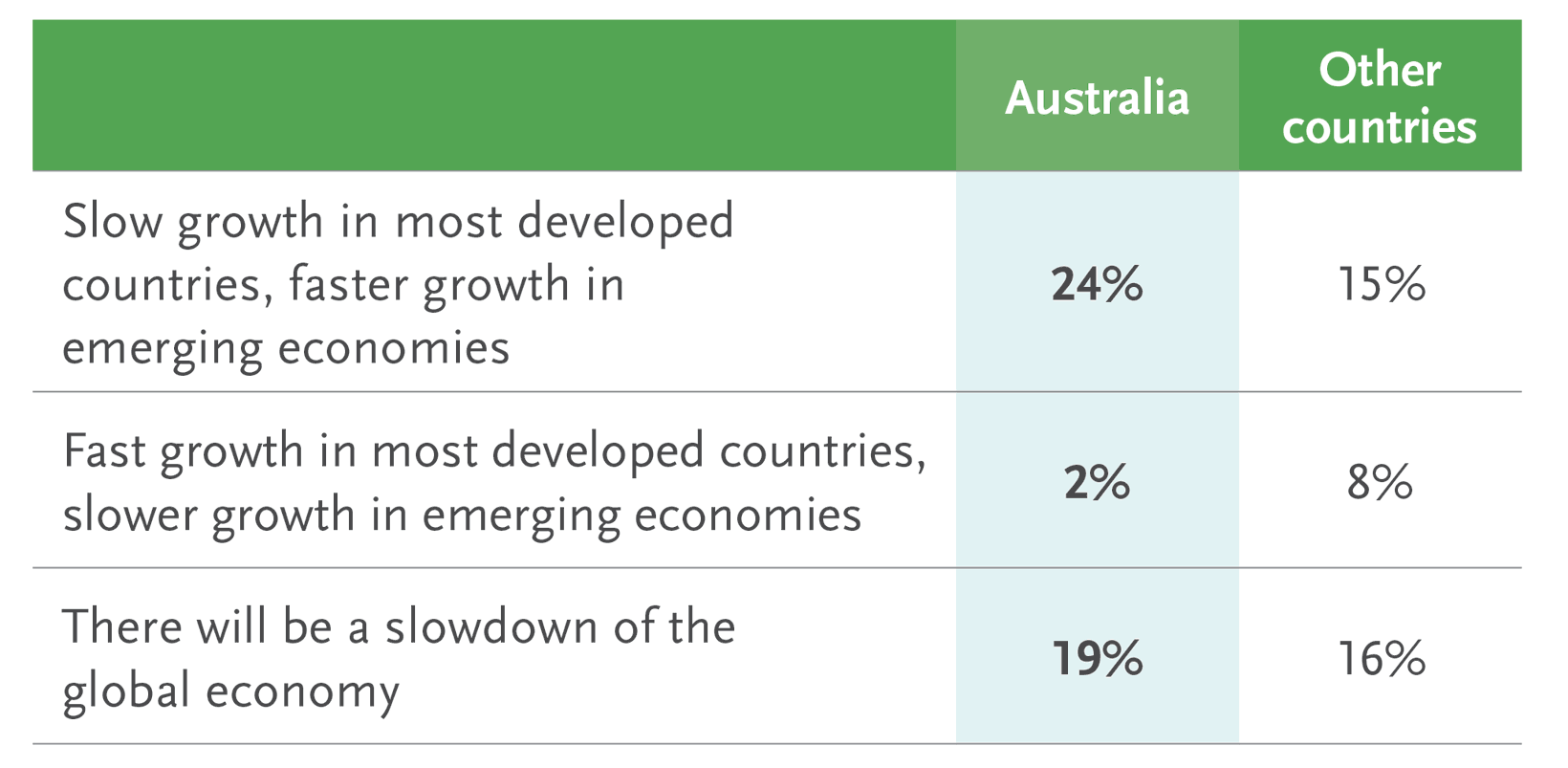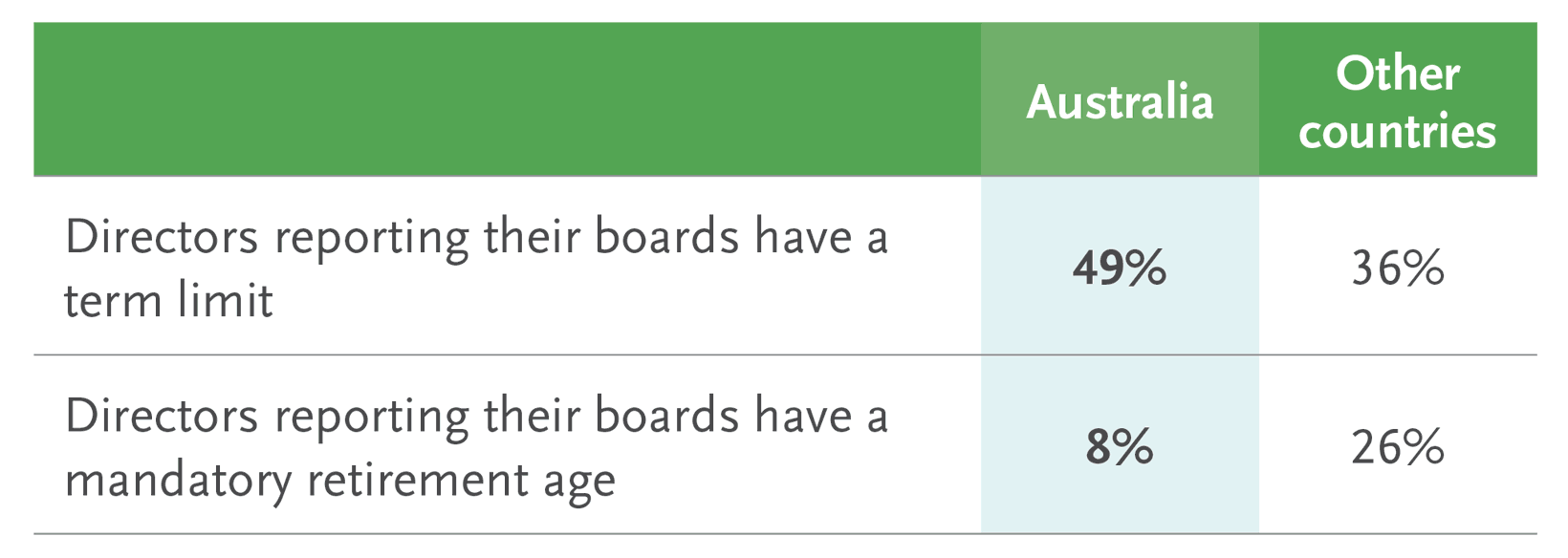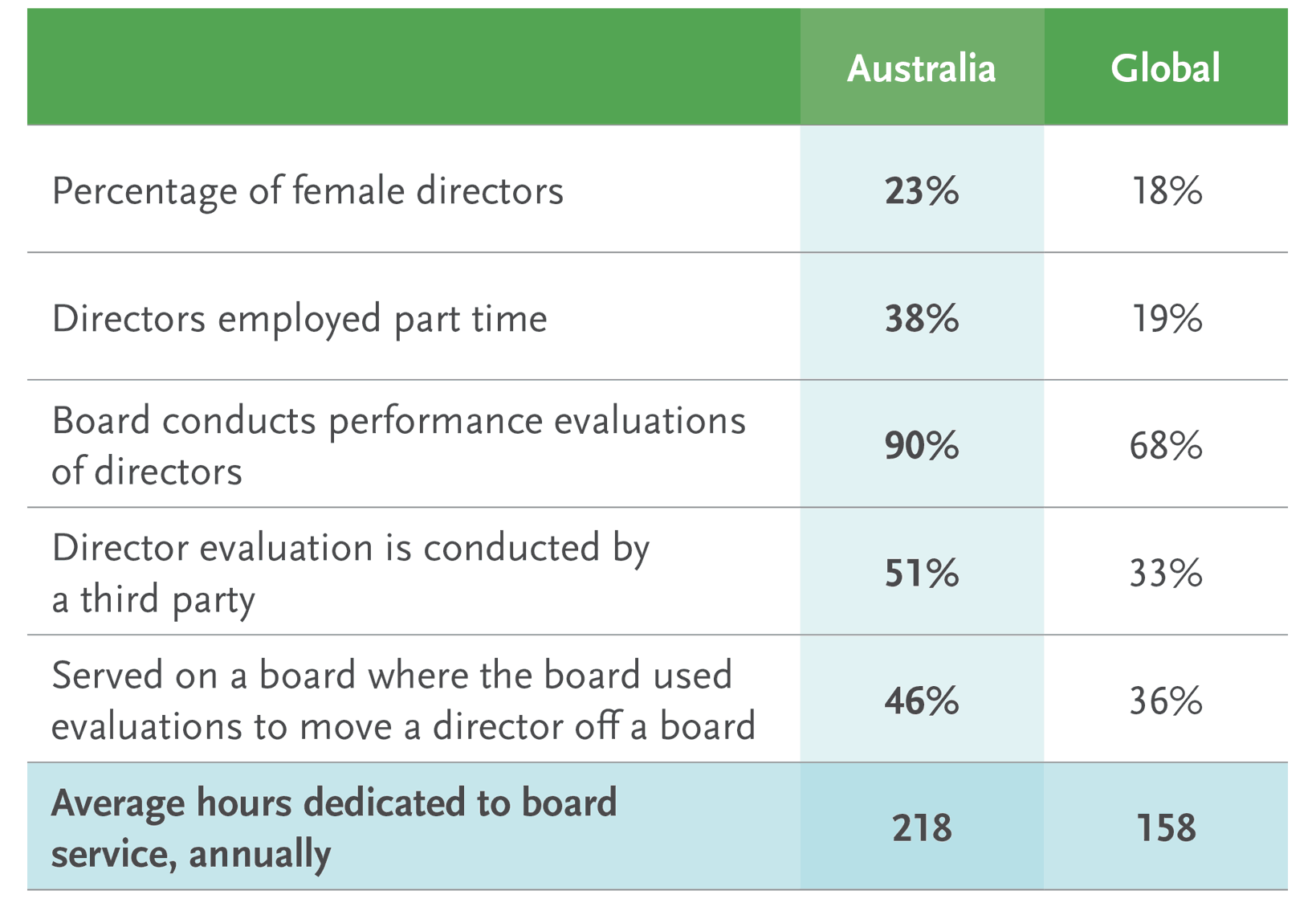To get a sense of the mood within boardrooms across the globe, we
recently conducted an in-depth survey of directors worldwide. In light
of Australia’s election in early July, we went back to reexamine
Australian directors’ responses to see what they were thinking in the
months leading up to the vote.
Released in April, the 2016 Global Board of Directors Survey was
produced by Spencer Stuart, the WomenCorporateDirectors (WCD)
Foundation, Professor Boris Groysberg and doctoral candidate Yo-Jud
Cheng of Harvard Business School, and researcher Deborah Bell. The
survey collected responses from more than 4,000 male and female
directors from 60 countries, within many of the world’s top public and
large, privately held companies.
The study explores how boards think and operate, and captures the
governance practices, strategic priorities and views on board effectiveness
of corporate directors around the world. The growing demands
on corporate boards are transforming boardrooms globally, with directors
taking on more strategic, dynamic and responsive roles to help
steer their companies through a hypercompetitive and volatile business
environment. Economic and political uncertainties make
long-term planning more difficult, and the proliferation of cyber-attacks
— and their consequences for business in financial losses and reputational
damage — increases the scope of risk oversight.
With regards to Australia, our results found some compelling differences
between directors there and their counterparts across the world.
Some highlights include: Australian directors are more likely than
directors elsewhere to be concerned about the economy and political
instability, and they view customer influence as a much larger factor
than their global counterparts.
Feeling global concerns
When it comes to pressing international concerns,
Australian directors feel the global political environment
and the economy are the most important issues.
Seventy-four percent of Australian directors cite the
economy as a key political issue, compared with 65
percent of directors globally. Meanwhile, 27 percent of
Australian directors rank political instability as a leading
issue, versus 18 percent of directors globally.

Bullish on developing countries
Despite Australian directors’ concerns about the global
political/economic situation, they are more optimistic
about growth prospects in emerging economies. Nearly
one-quarter of Australian directors (24 percent versus 15
percent of all directors) expect slow growth in most
developed countries, but faster growth in emerging
economies. Similarly, Australian directors are much less
bullish about rapid growth in developed economies —
only 2 percent of Australian directors foresee fast growth
in developed countries and slower growth in emerging
economies, compared with 8 percent of global directors.
Overall, Australian directors are not especially optimistic
about the world’s economy — 19 percent predicted an
economic slowdown on a global scale, compared with
16 percent of other directors.

Facing more local issues
In addition to global concerns, Australian directors also
see significant challenges arising within their borders.
Forty-six percent say the regulatory environment is one
of the top challenges to achieving strategic objectives,
compared with 39 percent of global directors. They also
see domestic competitive threats as a bigger issue than
their global peers, 35 percent compared to 29 percent.
“Political and economic uncertainty is being felt in the
nation’s boardroom,” Kevin Jurd, who leads Spencer
Stuart’s Board Practice for Australasia. “At the same
time, board directors also tell us they feel the regulators
are getting tougher and more rigorous, which is driving
up the time boards must spend on compliance versus
strategic discussions at this important time.”

Putting the customer first
Australian directors express higher concerns about
consumer demand, citing customers as stakeholders in
their companies (70 percent) much more frequently
than directors in other countries (52 percent). Australian
directors rate the level of influence that customers exert
over their companies as being second only to investors/
shareholders. Similarly, Australian boards are much
more likely to cite the community (63 percent in
Australia vs. 37 percent worldwide), government (54
percent vs. 31 percent) and workers’ unions (26 percent
vs. 15 percent) as stakeholders in the company as
compared to other boards worldwide.
Promoting board turnover
In order to encourage renewal on the board level, directors
in Australia lean toward term limits over mandatory
retirement: Nearly half of Australian directors report that
their boards have a term limit (49 percent versus 36
percent of directors globally), while 63 percent support
term limits (compared to 60 percent globally). This
difference between the actual practice of term limits and
the support for them could indicate that Australian
boards will take on this issue down the road.
Another finding indicates only 8 percent of Australian
directors said their board has a mandatory retirement
age, compared with 26 percent globally. Only 19 percent
of Australian directors said boards should have a
mandatory retirement age versus 45 percent of directors
globally. Australian directors also feel more strongly than
directors globally that board members lose their independence
after a certain number of years, 56 percent
versus 43 percent.

Along those lines, Australian directors are more independent
than their global counterparts (74 percent
versus 67 percent) and have a higher renewal rate (16
percent of Australian directors were appointed in the
past 12 months, compared with 13 percent).
Ninety percent of Australian directors reported their
board conducts a performance evaluation of individual
directors, and among those boards, 51 percent use a
third-party to facilitate board assessments. Forty-six
percent have served on a board where the evaluation has
been used to move a director off the board. Australian
boards also have a greater representation of women
than the global average; 23 percent of Australian directors
are women, as opposed to 18 percent worldwide.
As a result of their system, Australian boards keep
more experienced directors and maintain strong institutional
knowledge, while also ensuring boards cycle in
new members for fresh perspectives. “When implementing
term limits, Australian directors emphasize
the importance of staggering appointments so that
there is a progressive and predictable cycle of renewal,”
notes Cheng.
